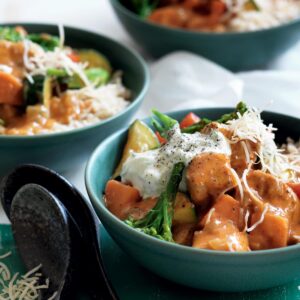
There’s a lot of confusing information out there about nutrition, especially if you are – like most people – active on social media.
If you follow a few healthy eating or exercise pages or Instagram feeds, you could be forgiven for thinking that a normal old sandwich for lunch is terribly passé, and you should really be having a green smoothie with a raw superfood salad and a paleo brownie.
You may also be told that everything ‘they’ have told you about healthy eating is wrong, is actually going to make you unhealthy, and what’s more all the dietitians, nutritionists and scientists are part of a big conspiracy to make everyone unhealthy and sick. Australian celebrity chef Pete Evans (who appears on TV as a judge on the show My Kitchen Rules Australia) has been kicking up a fuss in the Australian media saying that recently. Evans is a fan of the paleo diet and calls himself a ‘paleo ambassador’. He’s not only promoting this diet as the way we should all be eating, but also seems to be attacking anyone who does not agree.
I find this frustrating, and I can totally understand why people feel more and more confused about what a healthy diet is all about. The fact is we all eat; so we are all entitled to our opinions about what is good and not good to eat. But another fact is that no one way of eating is right for every single person. There are many ways to eat a healthy diet, and what works for you will depend on many factors including your lifestyle, family situation, culture, heritage and budget, not to mention any intolerances or allergies. For some people, a paleo-style diet might be great. For others, a more varied diet will suit better. Nutritionists say the paleo diet has some good aspects, such as lots of fresh vegetables. But they have concerns about the fact that it cuts out many common foods which have nutritional benefits, such as dairy and whole grains, and also because it encourages high intakes of meat, which is linked to increased risk of bowel cancer. Personally I am not a fan of any way of eating which encourages me to divide foods into ‘allowed’ and ‘not allowed’ categories. Plus, paleo eating eliminates lots of foods which I happen to think are delicious.
I feel the same about the raw food trend. I think a big salad full of raw leafy greens and other crunchy, colourful vegetables is delicious, satisfying and full of nutrients. But I’d hate not to be able to eat all those things that really have to be cooked. Think of chicken, red meat, potatoes and most grains. Dairy’s also off-limits in this diet.
I also think there’s some distortion of trends that’s going on now with both of these diets. You can buy paleo chocolate, paleo protein powder and paleo cookie mix. These are never going to be health foods. Many of the paleo/raw ‘sweet treat’ recipes you’ll find online are much, much higher in calories than their conventional equivalents. Many of the slices, cakes and ‘cheesecakes’ in raw food cooking are made from combinations of nuts, dried fruit, coconut and coconut fat, along with fruits and honey. Although they have a lot of good things going for them – they’re often high in fibre, for example – they are seriously energy dense. A recent recipe I saw for a raw strawberry cake had more calories per slice than an average main course. And it’s almost a given that anything with a ‘paleo’ or ‘raw’ label on it will be a good deal more expensive than conventional food.
So if you’re thinking of trying one of these diets, I’d encourage you to think first about whether it’s right for you and your situation, and consider whether it’s a way of eating you can sustain long term, forever. As an alternative, you could make small tweaks to how you’re eating now – add more vegetables, for example, or add more fish, or cut down on the alcohol – which will also yield long-term benefit and may be more achievable.
www.healthyfood.com










